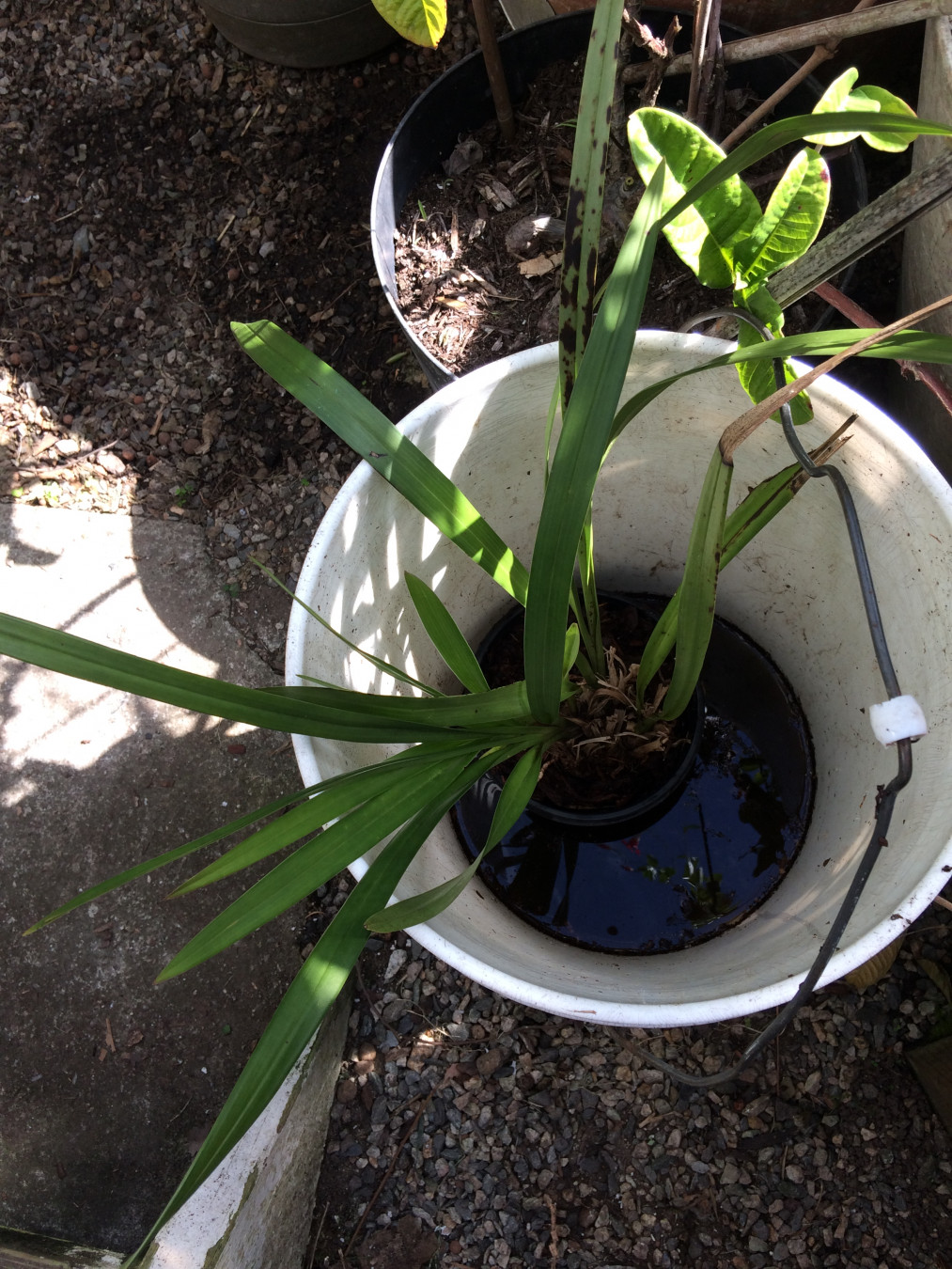Cymbidiums are beautiful flowering plants in the orchid family, featuring many showy flowers arranged on unbranched stems. For the winter greenhouse these orchids are a favorite. They are also very popular as cut flowers during the winter months. Typically, they come into bloom in late January through March when little else is in bloom. When in flower the blooms can last six to eight weeks provide the potting medium is kept moist. If you allow the medium to dry out, the flowers tend to dry up and fall off.


Cymbidiums like to be in bright light, but not in direct sunlight, as they might be in their native habitat of east India and the Himalayas. If they are placed in full sun the leaves tend to turn yellow and dry up. I find that a shelf in my south-east facing greenhouse allows the plants to get winter morning sun, but by early afternoon they are in shade. In summer, the plants live on the patio where they are shaded by a large tree. Most days during the summer months the plants are watered by placing them in a pot of water to soak for ten minutes or so. I use rainwater in a bucket. Around here the rainwater is slightly acidic which suits the plants just fine. If your water is ‘softened’ with a water softener (used to treat ‘hard’ water), you should water with bottled spring water.


The plants are fertilized once a month with a half-strength general purpose fertilizer. It is during the summer months that you will see new flower spikes start to form. These pseudobulbs, sometimes called flower spikes, turn into flower stalks in the middle of winter. Each pseudobulb only flowers once in its lifetime. Last winter, I had an amazing display of flowers in the greenhouse during January to March with eight or nine plants in bloom at the same time. After flowering the plants should be repotted.


Somewhat surprisingly, these plants produce their best flowers when they are slightly root-bound. Leaving them root-bound for a second season in the hope of another exceptional flower display results in an excessively root-bound condition that can impair the plant’s ability to take up sufficient water and nutrients.

I let two of my cymbidiums get overly root-bound to the point that I literally had to cut the plastic pots away to repot them. While repotting these plants, I took the opportunity to divide the plants and to see if I could use the back-bulbs to grow new shoots.

Cymbidium back-bulbs are the old, leafless, dormant-looking bulb-like structures located behind the main bulb-like swelling at the base of the plant’s leaves. Many gardeners use these back-bulbs to increase their stock. To get your back-bulbs to root, wash and dry them and set them in leaf mold mixed with sand and a little potting soil. To keep them moist put the pot with the bulbs in a plastic bag and set them in a warm shady spot. In five or six weeks you might see a green plantlet root emerging from one or two of the bulbs. When that plantlet has three or four leaves it can be severed from the main root and potted up. fertilize it and keep it moist. Eventually, in about three years, you will get a plant large enough to flower.


